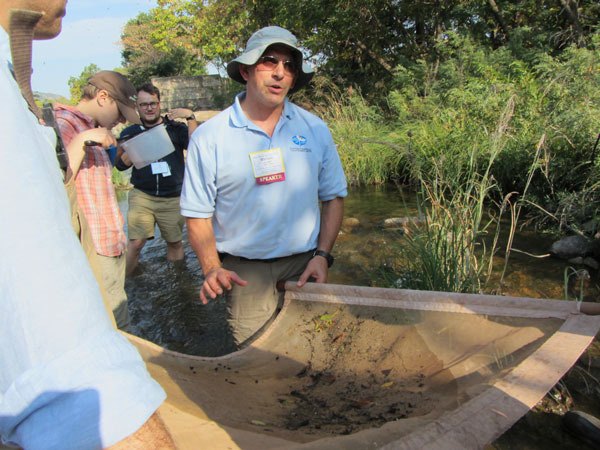Hundreds of journalists, including myself, with an interest in science and the environment recently gathered in Norman, Okla.
I’d never been to Oklahoma, nor can I say it was on my bucket list of places to visit, but that changed when the opportunity to attend the Society of Environmental Journalists 25th annual conference arose.
The conference centered on water, weather and energy — all topics that no matter where you live are likely relevant.
Oklahoma proved a fascinating stage for the conference with its sustained drought, long-term water supply needs, severe weather, increasing earthquakes related to the ongoing drilling and fracking, mining, frequent tornados that seemingly create resilient communities and sprawling prairies.
I furiously wrote, typed and recorded countless lectures and panel discussions hoping to improve my abilities to interpret data and scientific studies, to gain skills to better follow the money, as well as deepen my understanding of human behavior in response to a changing planet, politics and reporting.
Taking a global look at people’s relationships to water, weather and energy and scaling those down to be reflective of the area and community I report on became my goal throughout the five-day conference.
Norman, Okla., is 2,708 miles from Sequim, but the environmental challenges felt by the communities there aren’t too different from those in Sequim. Most notably water use is in the forefront for both Sequim and Norman city planners and residents.
Similar to the reclaimed water facility established in Sequim, city officials from Chickasha, Okla., recently collaborated with those at the University of Oklahoma’s South Central Agricultural Experiment Station to pipe reclaimed water from Chickasha to the research station for irrigation.
The research station has long struggled with sourcing water because the salinity of the surrounding aquifer is naturally too high for use on crops.
Although farmers in the Sequim-Dungeness Valley don’t combat high salinity, water management and conservation is seemingly becoming a greater priority.
The importance of wise water management was highlighted this past summer when the Dungeness River, which serves as the primary irrigation source and provides habitat for an abundance of life, dropped to historically low flows.
Oklahoma-dry
Unlike Washington and Sequim that rely heavily on irrigation however, most of Oklahoma is dryland farming and thus farmers there look to rainfall, drought-resistant crops and moisture conservation for success.
The scale of the farms in Oklahoma tend to be much larger and therefore don’t require as concentrated, high-yielding crops to be economically viable like those locally given the relatively small plots of land.
Balancing water use as a shared resource became a theme throughout the conference, along with topics centered on climate change and community adaptation.
These discussions tended to encompass a more global perspective and the projected direction of the planet couldn’t help but often leave me with more questions than answers.
The likely increase in extreme weather events worldwide, threats to biodiversity, ocean acidification, sea-level rise and the challenge of balancing limited natural resources are all issues hazy on the horizon of the human race — but, to me, where and how community journalists begin to cover these types of phenomenons isn’t always clear.
During the conference the question of how do I positively contribute to my community continued to chime through my thoughts.
I came to the conclusion that it probably depends on the individual reporter and the root of why they were interested in pursuing journalism to begin with.
For me, I believe the value of research, experiences and ideas hinge on the ability to share those findings, experiences and ideas; thus driving my curiosity.
The conference not only provided me with few extra tools, but it instilled a renewed sense to act as a conduit of information and insight, and in doing so perhaps aid in others’ understanding or ability to make educated decisions.
Journalism and reporting is a form of story telling — though it’s often more factual than anecdotal, I believe it’s important within every culture and community.
Reach Sequim Gazette reporter Alana Linderoth at alinderoth@
sequimgazette.com.



